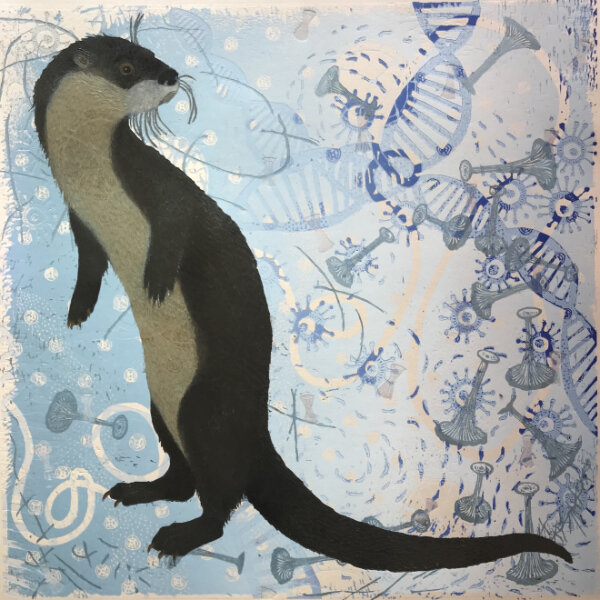
Julie Crane
Woodcuts and multimedia prints

About
Julie Crane grew up in Camden and has been creating art for more than three decades. Her work has been shown in more than 40 exhibitions, including collections and museums in Russia, Paris and New York City. Crane’s first exposure to art classes was in the basement of the Camden Library at age six. Throughout her formative years she received formal instruction in the disciplines of drawing, painting and sculpture. By age 14, she’d been mentored by three art professionals and was accepted into the Gifted and Talented Art Program at Camden High School.
During her teen years Julie participated in art classes at the Farnsworth Art Museum and The Maine Coast Artists Gallery. For her undergraduate studies, she attended Maine College of Art in Portland, where she was awarded her BFA with concentrations in ceramics and sculpture.
After schooling, she relocated to Santa Fe, New Mexico, and at age 24, found herself showing extensively in some of the region’s most notable galleries. Here she retained representation by the highly esteemed Turner Carroll Gallery and for more than a decade she remained in the rich art culture of the area, creating work that was shown internationally and acquired for permanent collections including The Citadelle Art Foundation of Texas, Museum of Women in the Arts and the Podesta Collection of Washington, D.C. and the Michael Woolworth Collection of Paris, France.
By 2000, Crane returned to her Maine roots to build her studio in Thomaston, where she resides with her husband.
Julie is a multimedia artist who primarily depicts creatures in an atmosphere of objects with amplified scale. Microscopic elements from the ocean mingled with seed pods and the trails of the flight pattern of birds enter into the layering of marks. Crane’s work considers the impact of change upon our common and familiar environment. Recent collaborations at marine laboratories have supplied access to viewing the single-cell organisms often included in her repertoire of shapes. The shifting patterns of migration is considered as indicators of movement amongst people.